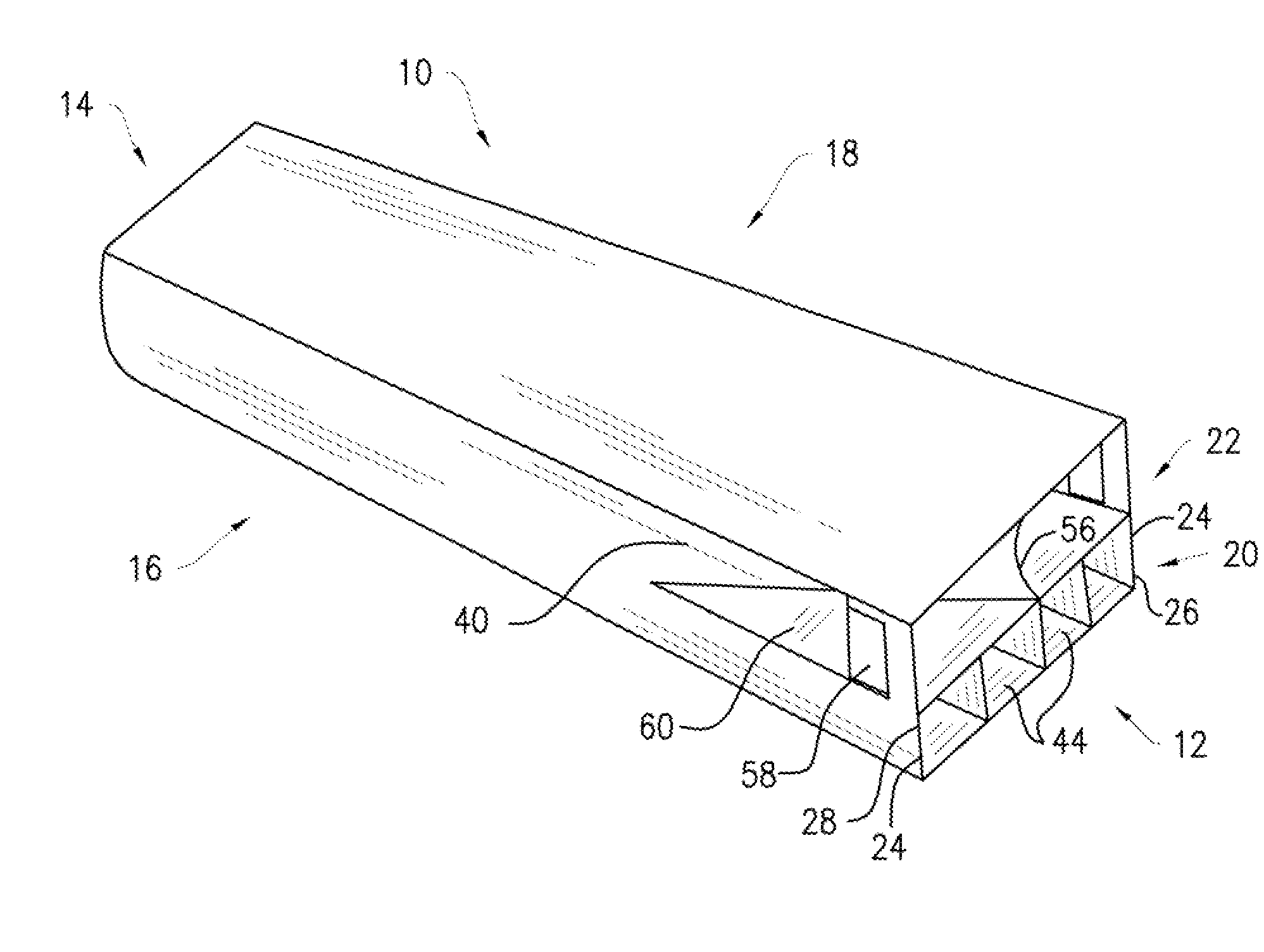Ship with a special lower level
a technology of hull and lower level, applied in the field of ships, can solve the problems of lack of stability, plow-bow-shaped hull, few ships are practically adaptable to heavier ships, etc., and achieve the effects of improving maneuverability and efficiency, reducing pressure in the tunnel, and improving ship performan
- Summary
- Abstract
- Description
- Claims
- Application Information
AI Technical Summary
Benefits of technology
Problems solved by technology
Method used
Image
Examples
Embodiment Construction
[0026]The method of the present invention will now be illustrated by reference to the accompanying drawings.
[0027]Preferred embodiments of the new ship body of the present invention have been assigned reference numeral 10. Other elements have been assigned the reference numerals referred to below.
[0028]The ship body 10, also referred to as ship 10 and vessel 10 is directed to the new type of ship body that has at least two levels. As most ship bodies, ship 10 comprises a bow end 12, a stern end 14, a right side 16, and a left side 18, all marked for ease of reference on FIG. 1. The bow end 12 refers to the front section of the ship, the stern end 14, to the rear section of the ship, and the right side 16, and the left side 18, to the right and left side of the ship (not the drawing), respectively.
[0029]The ship 10 further comprises a lower level 20 and an upper level 22. The lower level 20 is one of the key elements of the design of the new vessel. It is the element that allows for ...
PUM
 Login to View More
Login to View More Abstract
Description
Claims
Application Information
 Login to View More
Login to View More - R&D
- Intellectual Property
- Life Sciences
- Materials
- Tech Scout
- Unparalleled Data Quality
- Higher Quality Content
- 60% Fewer Hallucinations
Browse by: Latest US Patents, China's latest patents, Technical Efficacy Thesaurus, Application Domain, Technology Topic, Popular Technical Reports.
© 2025 PatSnap. All rights reserved.Legal|Privacy policy|Modern Slavery Act Transparency Statement|Sitemap|About US| Contact US: help@patsnap.com



